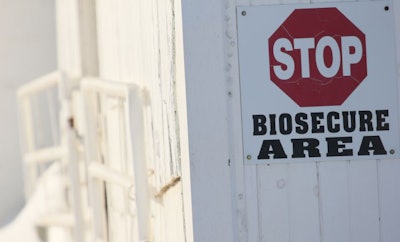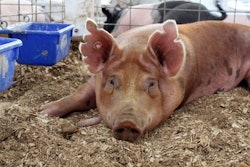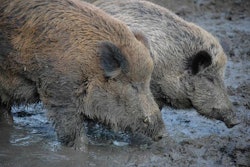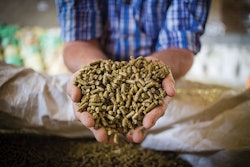
New additions to the American Feed Industry Association’s (AFIA) handbook of biosecurity guidelines — the first update since 2015 — emphasize the importance of communication within businesses, and with consumers.
Though the 2015 guidelines required very little revision, the feed association realized that the industry lacked a uniform definition of what it meant to be biosecure, said Paul Davis, director of quality, animal food safety and education for AFIA. This lack of common language made it difficult for the industry to communicate their feed security standards with consumers, and the public at large.
With outbreaks of African swine fever and other animal diseases in the news, Davis said, “questions began to bubble up. But, in general, it was just one question: 'Is your feed/ingredient safe?’”
The new guidelines aim to provide an answer to that question by defining what feed mill biosecurity means. But they also aim to promote more in-depth dialog, Davis said, because the reality is that biological questions rarely have black-and-white, yes-or-no answers.
“The best answer is, ‘yes, we believe our product is safe, because these are the areas we’ve focused on,’” he said. “But until both parties know what to ask, everyone is looking for that yes-or-no answer. We wanted to foster good dialog.”
To qualify as having a “biosecure facility,” according to AFIA’s new guidelines, a manufacturer should not only have a biosecurity plan in place, but should also be able to verify that the plan is followed. The facility should be designed to prevent the introduction of microbes, and should have operating procedures for ingredient sources, receiving and storing ingredients that take biosecurity into account. Employees should maintain proper hygiene and engage in routine housekeeping procedures and inspections.
And consumers of feed products and ingredients should feel empowered to ask detailed questions about these criteria, Davis said. It’s appropriate for consumers to inquire about a facility’s biosecurity plan, about where ingredients are sourced and about whether the facility is subject to third-party audits for safety.
“We want to take away all undue angst,” he said, “but we also want an informed industry out there, both animal and feed industry, so they can have the conversation and make a good decision.”
Victoria Broehm, an AFIA spokeswoman, said the new guidelines, released in late January, are part of a multi-pronged biosecurity initiative launched by the association in fall 2018. Fostering additional communication and encouraging new research into unanswered questions about mitigation and biosecurity related to African swine fever are central tenets of the action plan for addressing the risk of animal disease.
















